Complete Solutions to Exercise 3.2 of chapter RIGID BODY DYNAMICS 2 of Class 11 book with complete answers and questions
| Class 11 | PHYSICS |
| Chapter | RIGID BODY DYNAMICS 2 |
| CENGAGE PHYSICS | Exercise 3.2 |
| Number Of Questions | 13 |
| Academic Year | 2023-24 |
A circular disc of mass `M_(1)` and radius `R`, initially moving, With a constant angular speed `omega` is gently placed coaxially on a stationary circular disc of mass ` M_(2)` and radius `R`, as shown in Fig. There is a frictional force between the two discs.
If disc `M_(2)` is placed on a smooth surface, then 'determine' the final angular speed of each disc.
b. Determine the work done by friction.
c. Determine the fractional loss in kinetic energy. i.e. `/_\K//K_(i)`
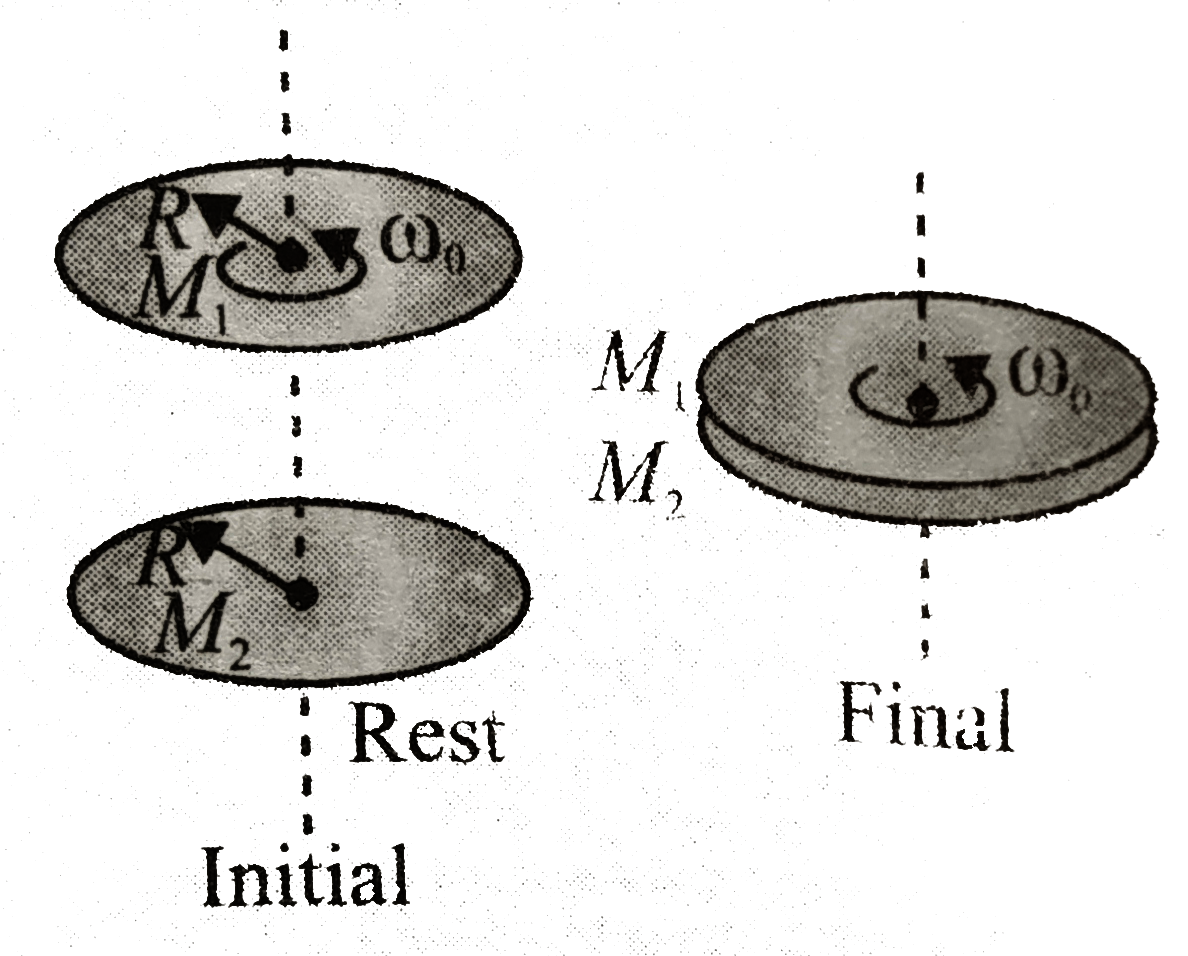 08:40View Solution
08:40View SolutionA child of mass `m` is standing, on the periphery of a circular platform of radius `R`, which can rotate about its central axis. The moment of inertia of the platform is `I`. Child jumps off from the platform with a velocity `u` tangentially relative to the platform. Find the angular speed of the platform after the child jumps off.
03:20View SolutionSuppose in the previous problem, the child stays at rest on the platform and one of his friend throws a ball of mas `m_(1)` towards him with a velocity of `v` from a direction tangential to the platform and the child on the platform catches the ball. Find the angular velocity of the platform after he catches the ball.
03:15View SolutionConsider a cylinder rolling on a horizontal plane. Its linear velocity is `v` and rotational angular velocity is `omega`. Find its angular momentum about point `P` on the ground as shown in Fig. What happens to this angular momentum if the cylinder is rotating in opposite direction but moving translationally in the same direction.
 03:27View Solution
03:27View SolutionA particle of mass `m` is released from rest at point `A` in Fig., falling parallel to the (vertical) `y`-axis. Find the angular momentum of the particle at any time `t` with respect to the same origin `O`.
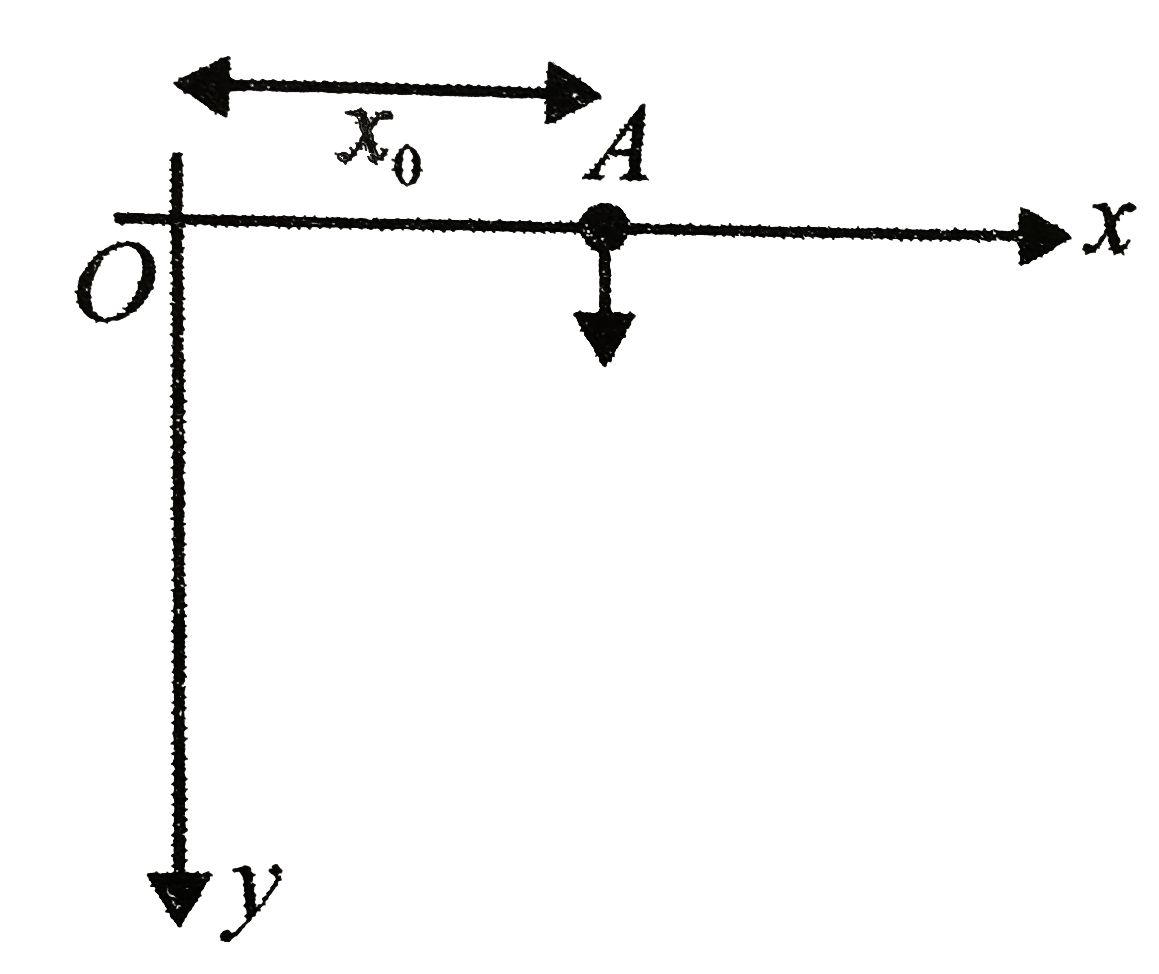 02:11View Solution
02:11View SolutionDiscs `A` and `B` are mounted on a shaft `SS` and may be connected or disconnected by a clutch `C`. The moment of inertia of disc `A` is one half that of disc `B`. With the clutch disconnected, `A` is brought up to an angular velocity `omega_(0)` .The accelerating torque is then removed from `A` and it is coupled to disc `B` by the clutch (Bearing friction may be neglected). It is found that `2000 J` of heat is developed in the clutch when the connection is made. What is the original kinetic energy of disc `A`?
02:59View Solution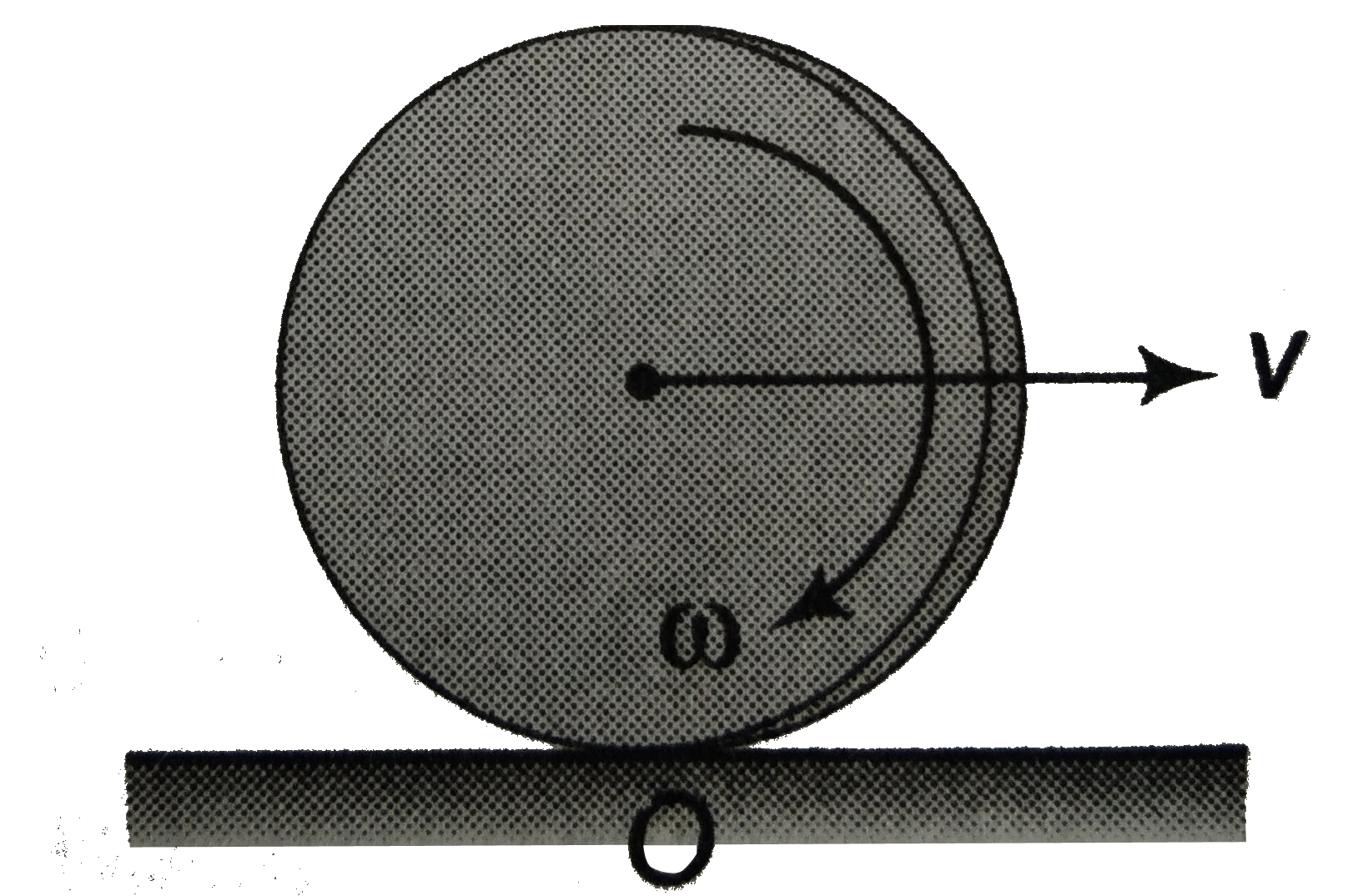
A cicular disc of mass `m` and radius `R` is set into motion on a horizontal floor with a linear speed `v` in the forward direction and an angular speed `omega=(v)/(R)` in clockwise direction as shown in figure. Find the magnitude of the total angular momentum of the disc about bottom most point `O` of the disc.01:58View SolutionA particle of mass `m` is projected with a speed `u` at an angle `theta` to the horizontal at time `t = 0`. Find its angular momentum about the point of projection `O` at time `t`, vectorially. Assume the horizontal and vertical lines through `O` as `X` and `Y` axes, respectively.
03:38View SolutionPoint masses `m_(1) and m_(2)` are placed at the opposite ends of a rigid rod of length `L`, and negligible mass. The rod is to be set rotating about an axis perpendicular to it. The position of point `P` on this rod through which the axis should pass so that the work required to set the rod rotating with angular velocity `omega_(0)` is minimum, is given by :
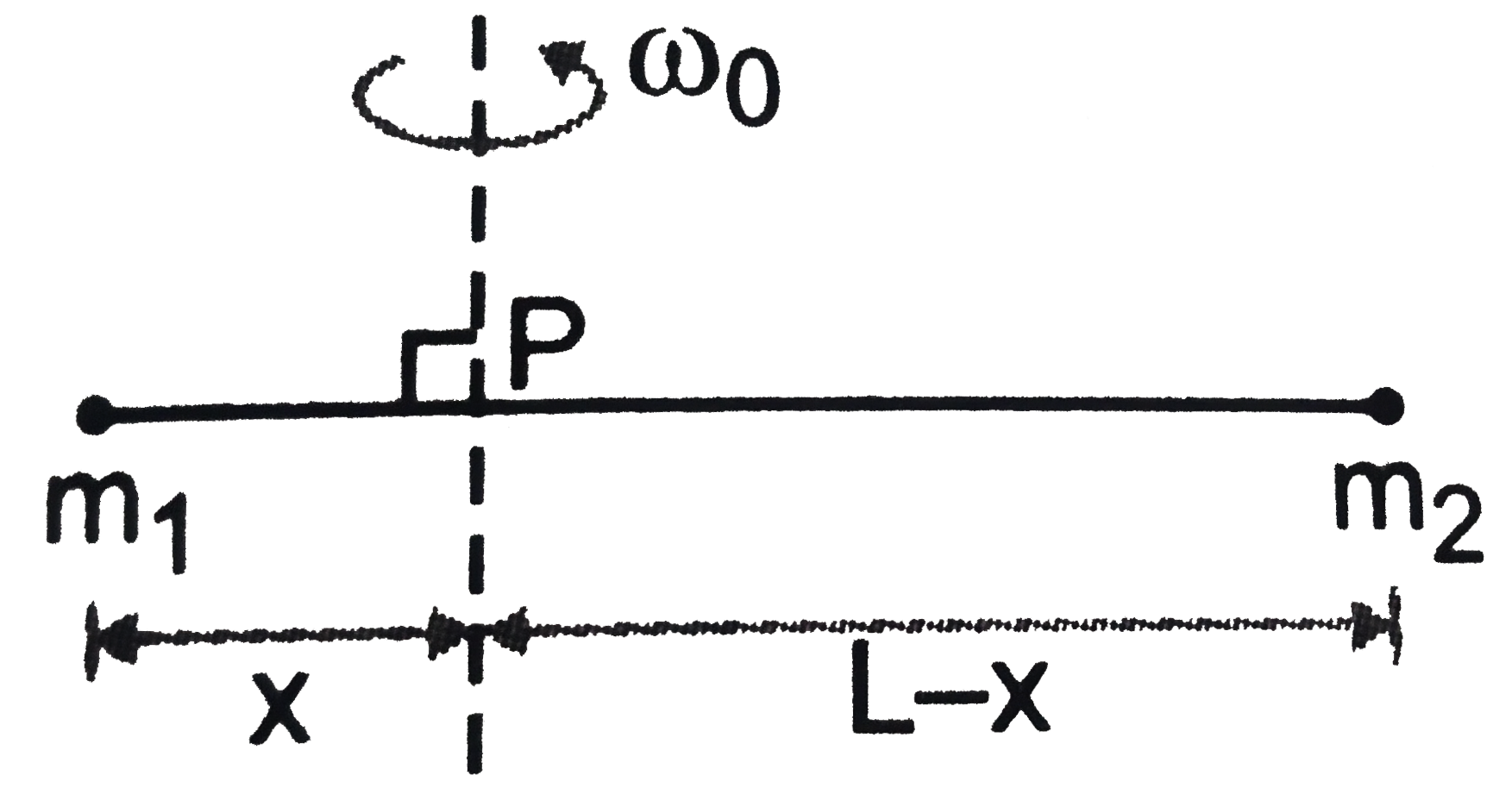 04:00View Solution
04:00View SolutionA thin uniform circular disc of mass M and radius R is rotating in a horizontal plane about an axis passing through its centre and perpendicular to its plane with an angular velocity `omega` . Another disc of same dimensions but of mass `(1)/(4)` M is placed gently on the first disc co-axially. The angular velocity of the system is
03:24View SolutionA thread is passing through a hole at the centre of frictionless table. At the upper end a block of mass `0.5 kg` is tied and a block of mass `8.0 kg` is tied at the lower end which is freely hanging. The smaller mass is rotate, on the table with a constant angular velocity about the axis passing through the hole so as to balance the heavier mass. If the mass of the hanging block is changed from `8.0 kg` to `1.0 kg`, what is the fractional change in the radius and the angular velocity of the smaller mass so that it balances the hanging mass again?
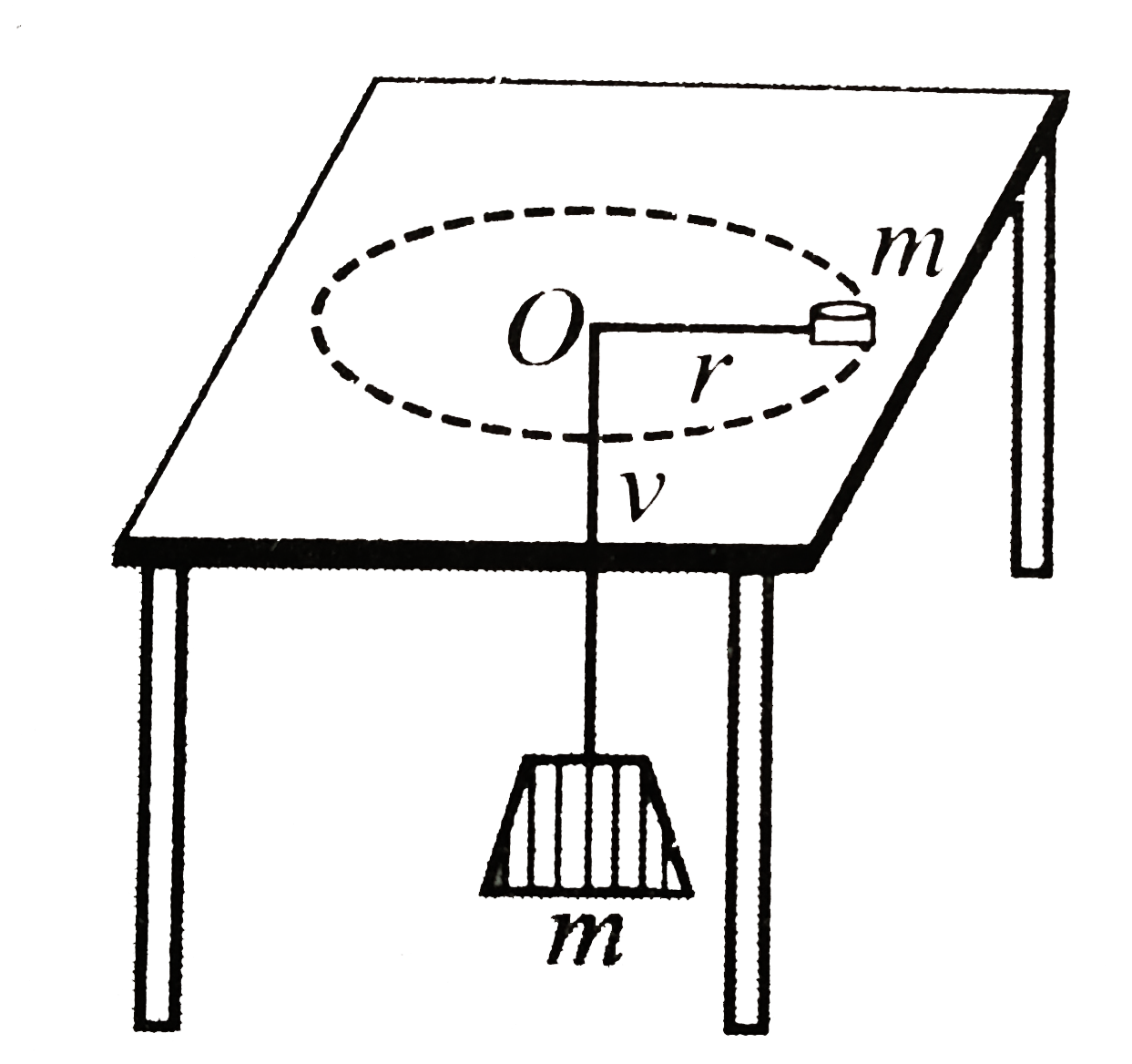 05:27View Solution
05:27View SolutionA girl jumps from a height `h` on the end of a see-saw. The see-saw consists of a uniform plank of length `I` pivoted at its centre. The plank is horizontal before the girl jumps. The mass of the see-saw is twice the mass of the girl. Find the angular velocity of the plank just after the girl jumps on the plank.
02:57View SolutionThe device shown in Fig. rotates on the vertical axle as shown. The frame has negligible mass as compared to the four masses each of mass `m`. Initial angular velocity of the system is `omega_(0)`. Due to an internal mechanism the spokes in the frame lengthen so that the radii of the masses become `2a`. Initially, it was a. What will be the new angular velocity of the system?
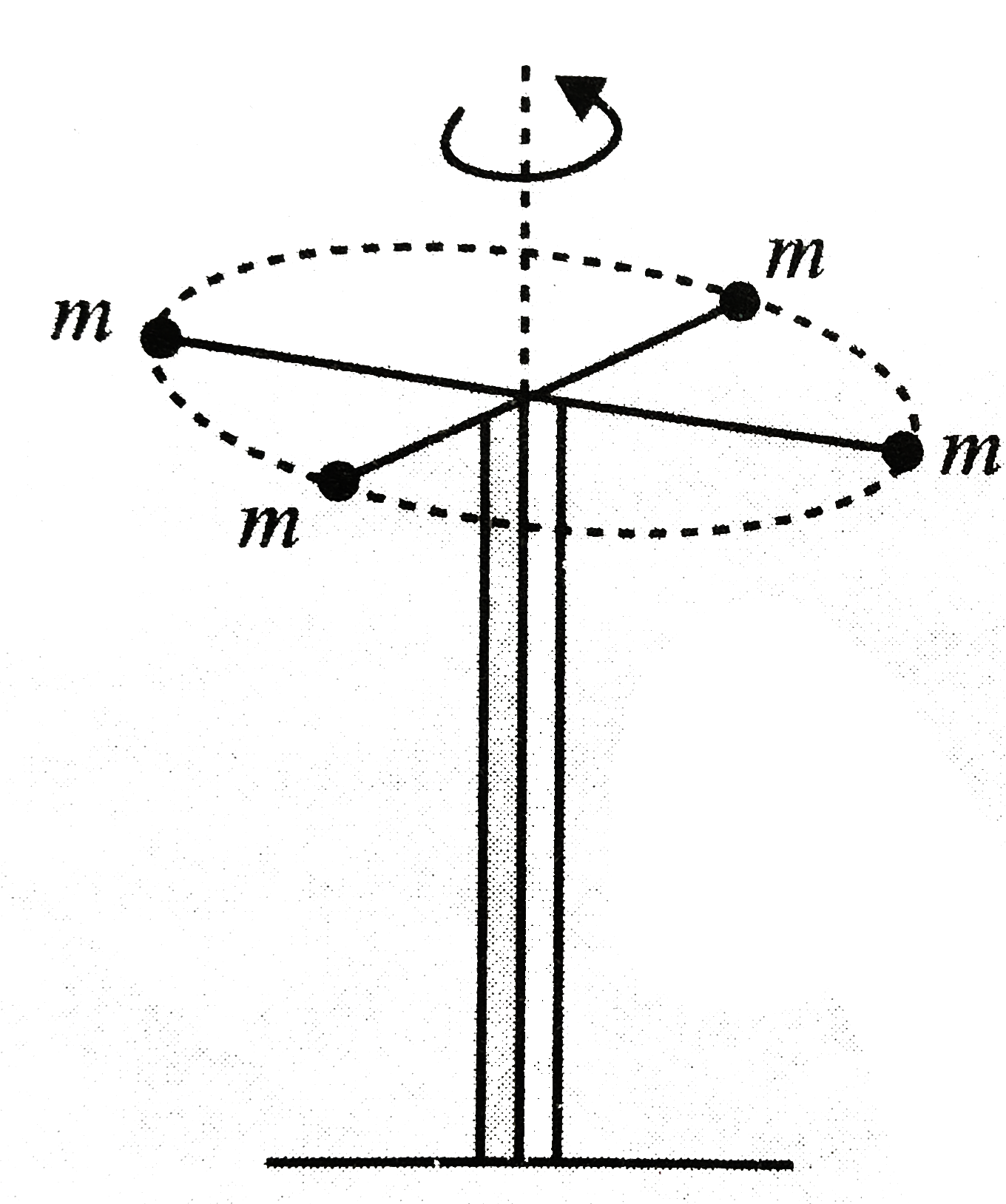 02:15View Solution
02:15View Solution
Exercise 3.2 questions and complete solutions for chapter RIGID BODY DYNAMICS 2 of CENGAGE PHYSICS (ENGLISH) of Class 11
